































For the last 3 years, Cisco has helped many CIOs and IT leaders achieve their objectives by using a business/IT architecture methodology called Strategic IT Roadmap, or SITR. SITR's ultimate deliverable is the "Unified Architecture Roadmap" whichaligns IT initiatives with the key business priorities. This puts the CIO in a strong position when defending the IT plan/budget towards the other C-level executives.
We have seen great successes in public sector accounts, such as Cambridgeshire and Bedfordshire Fire Services or Fontys University of Applied Science, coming from the fact that:
In this post, I explain how SITR can be performed in 10 steps, as depicted below.
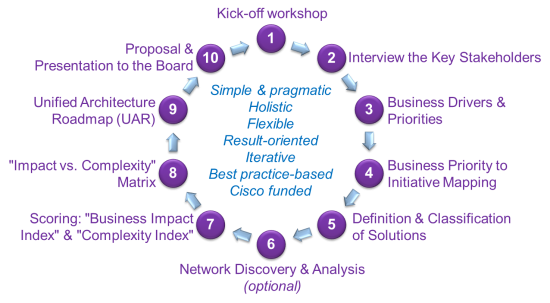
I will now describe each step and provide template slides; these are justsamples of what SITR deliverables look like.
Step 1: Kick-off workshop
We typically will run a 3-hour workshop (possibly over Telepresence) with the CIO and his team. We spend the first 2 hours to explain the "ICT Trends & Governance Models for Government" leveraging the expertise we have gained from our engagements with Government ICT leaders throughout the world. This in itself is already of great value to the audience. We then move on to SITR: we explain the process, answer any questions and agree on the way forward, essentially "who does what, when?"
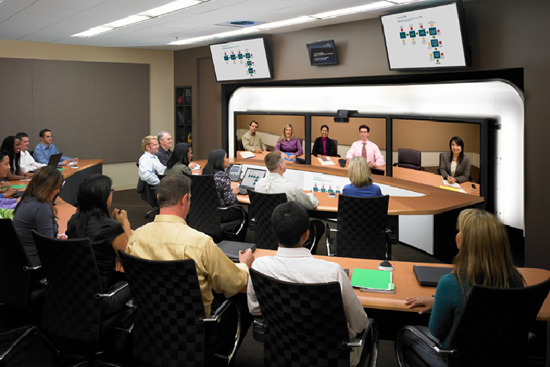
Step 2: Interview the Key Stakeholders
Cisco (and/or our partner) will interview and document the opinions of the key stakeholders who have been identified by the CIO. We use the "balanced scorecard" approach, as documented in COBIT5. Ideally, we run the interviews one person at a time: it requires more effort, but ensures that we don't miss anything. I recommend to speak to at least 8-10 people and to make sure that both the business as well as the IT sides are represented. This step alone can take several weeks, though ideally, all interviews should be finished in 2 weeks.
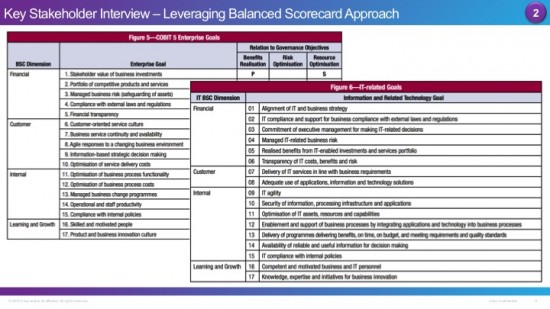
Step 3: Analyze the input and identify the top Business Drivers & Priorities
Once the interviews are over comes the most critical part of a SITR engagement: we need to establish the key business priorities that we will focus on. It usually takes at least 1 full day to do this properly, and requires strong analytical skills: Cisco's Solutions Architects will drive this step for you.
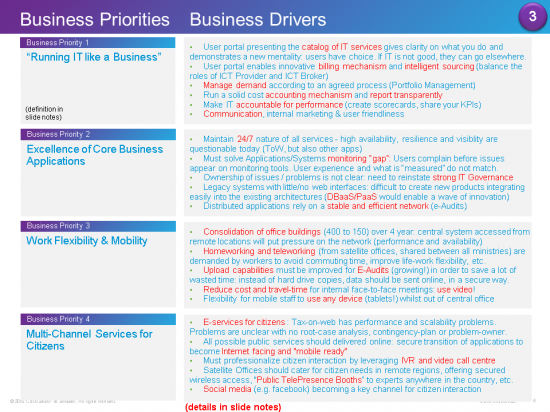
Step 4: Business Priority to Initiative Mapping
After the business priorities are identified, we will establish the IT initiatives that will achieve the expected business impact. This work is best done by a multi-disciplinary team in brainstorming mode. Again, it is critical to have a good Solutions Architect who can think cross-architecturally.

Step 5: Definition & Classification of Solutions
We will then define the actual "solutions" which map to each of the "initiatives" we identified. We will create one slide for each initiative/solution to explain what it consists of. We also classify each solution in one of the following domains:
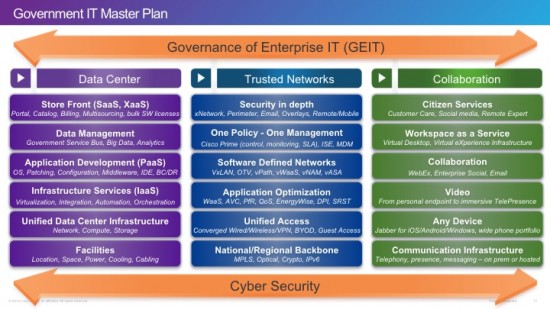
Step 6: Network Discovery & Analysis (optional)
Now that the target solutions are defined, it can be very interesting to run a network discovery: the objective is to assess just how close or how far IT is from being able to implement these solutions, and where the gaps are. Cisco's network assessment tools will perform advanced analytics and reporting on Cisco (and 3rd party) equipment, including lifecycle milestones, service coverage status, security alerts, hardware and software vulnerabilities, product upgrade and migration recommendations, IPv6, medianet and EnergyWise readiness, cost optimization analysis, etc.
Note that this step is optional: indeed, some SITR engagements are led successfully without performing the network discovery (for example, due to security policies at the customer's).
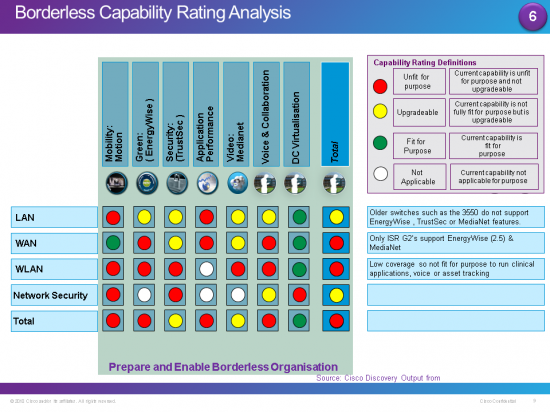
Step 7: Scoring: "Business Impact Index" & "Complexity Index"
For each of the solution, we will score 2 dimensions:
We won't get this one straight on the first run: it will take at least 2-3 iterations before the numbers start stabilizing. This step is also best performed by a multi-disciplinary team in "brainstorming mode".

Step 8: "Impact vs. Complexity" Matrix
This step is relatively simple: we just plot the solutions according to their scores. However, when placing the solutions next to each other, we usually immediately detect a few scores that need to be corrected (which gets us back to step 7).
This matrix gives us precious information to rank the initiatives and create the Unique Architecture Roadmap in the next step:
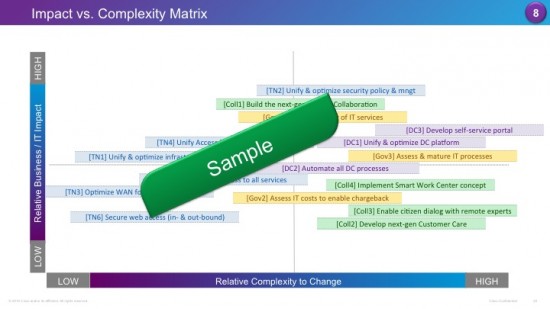
Step 9: Unified Architecture Roadmap (UAR)
The matrix provides a first approximation on how to order the initiatives onto the roadmap, but technical dependencies between solutions usually forces us to adapt the order, resulting in the UAR below.

Step 10: Final presentation and workshop
We can now present our report to the Board, showing how technology investments (from the UAR) are linking to the business priorities. Importantly, a SITR engagement should never be considered as a one-shot project. It is a continuous process: by now, we are ready to start with step 1 all over again!
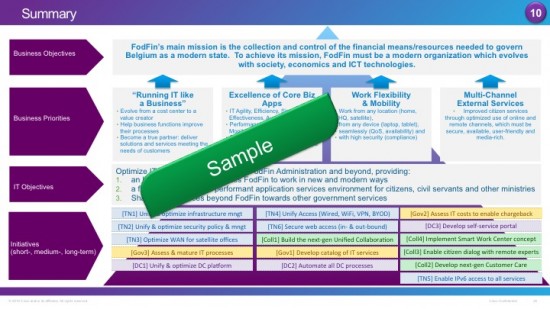
Any feedback on this post and on the TN methodology itself would be greatly appreciated: this allows us to constantly improve our approach.
If you are responsible for ICT in a Government Agency located in Europe, Middle-East, Africa or Russia and if you are interested by this approach, please don't hesitate to contact me directly to evaluate how we could initiate a SITR engagement.
 Etiquetas calientes:
#gobierno
Cisco Government Solutions
architecture
TN
Etiquetas calientes:
#gobierno
Cisco Government Solutions
architecture
TN